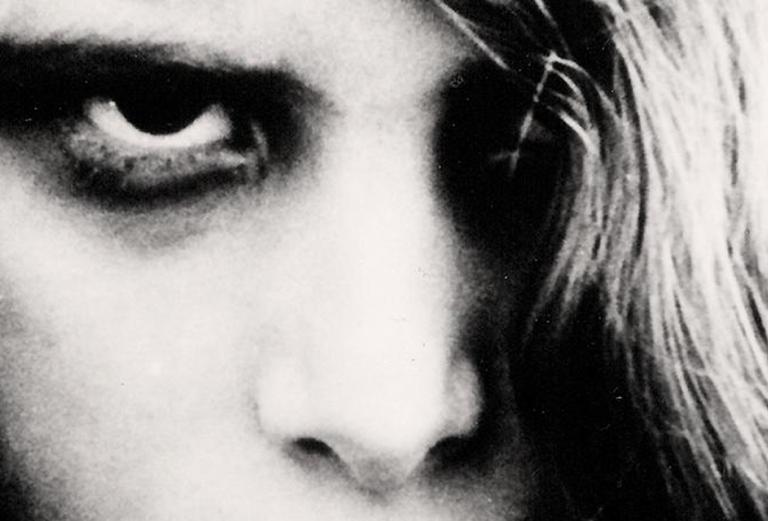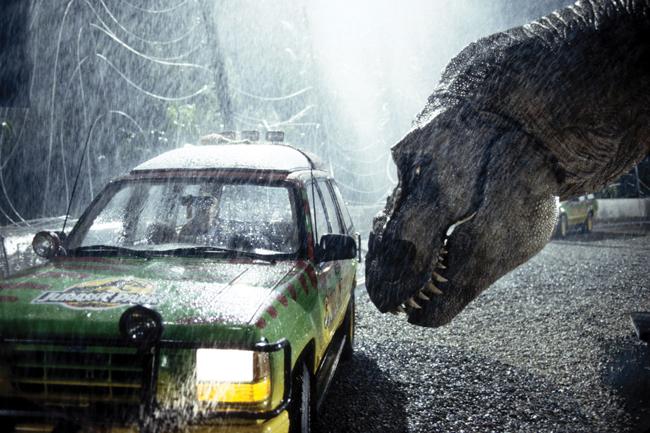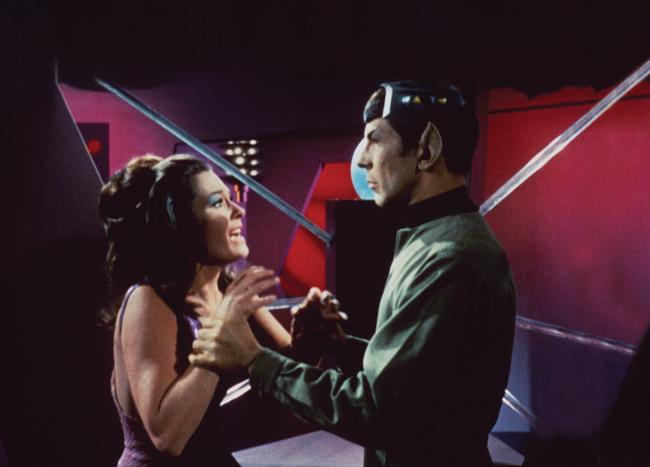Plight of the Living Dead
What can science fiction teach us about science fact?
- 12 minute read
- Feature

Undead Reckoning
The man lurches. Hunger pangs rack his body no matter how much, or how often, he eats. His skin, a sickly grayish green, reeks of decay. And whatever ails him seems to be catching. The diagnosis: Ataxic Neurodegenerative Satiety Deficiency Syndrome, or ANSDS. The patient is a zombie.
The undead, one hopes, are confined to celluloid. But for Steven Schlozman, an HMS assistant professor of psychiatry, zombies play a critical, if fanciful, role in his work, both in and out of the classroom. The monsters serve as a teaching tool for basic neurology—for what the undead can teach us about the living. They also help ensure a captive audience.
“When I walk into a room to give a lecture, people see a short, bald, bespectacled guy who’s there to talk about psychiatry, and they assume my class will be boring,” Schlozman says. “Then I start talking about zombies, or Buffy the Vampire Slayer, or another pop–culture reference, and they’re hooked.”
Schlozman has long been a horror film aficionado, but his interest in what makes zombies tick was piqued by a real–life scare. Late one night several years ago, while searching for a diversion from the stress and worry of his wife’s struggle with breast cancer, the psychiatrist found himself absorbed in a favorite flick, Night of the Living Dead. But this time, George Romero’s 1968 classic wasn’t just a flight of escapism for Schlozman.
“I found myself thinking that if I ever ran across anyone who displayed all the symptoms of a typical zombie, my first instinct wouldn’t be to shoot him, but to take him to the emergency room,” he says. “I began to wonder what, as a physician, I’d want to know about that person’s health.”
That curiosity kicked off a tongue–in–cheek quest to diagnose zombie signs and symptoms. He noted three main clues: zombies are slow, they move awkwardly, and their only goal–oriented behavior is to try to quell a constant craving for human flesh. Drawing on a physician’s knowledge of basic neurology, Schlozman related these traits to specific regions of the brain known to control certain motor functions.
That unsteady plod? It could be the result of dysfunction in the cerebellum and basal ganglia, the areas responsible for fluid, coordinated movement. The ataxia attributed to the undead, Schlozman points out, resembles the totter of people with Parkinson’s disease, which also affects the basal ganglia. That yen for a meal of braaaiiiins? A problem in that same organ’s satiety center, the ventromedial hypothalamus. All this damage, Schlozman theorizes, may mean that zombies are almost completely ruled by the amygdala, that primitive, reptilian part of the brain responsible for basic emotions. In that sense, the undead resemble the amygdala–driven crocodile.
Diagnosing the undead to explain brain basics is the whimsical premise of Schlozman’s recently published novel, The Zombie Autopsies. The real power of the psychiatrist’s fascination, however, may lie in what these silver screen villains have to teach us about ourselves.
“Romero–type zombies move so slowly you could eat a sandwich waiting for them to attack you,” says Schlozman. “Yet in every movie, we’re overcome by throngs of these creatures. I wanted to know why.” The answer, he suspects, lies in mirror neurons, nerve cells that scientists believe “light up” not only when we do something, but when we observe another person perform that same action. The mirror–neuron response is what makes us flinch when we see someone get hurt and what makes a monkey start peeling a banana when he sees his simian pal do the same. In other words, mirror neurons appear to be responsible for empathy.
When confronted by zombies, which look like—and well might be—decomposing versions of our friends and neighbors, those mirror neurons kick in. “Zombies still appear somewhat human,” Schlozman says. “We hesitate to believe that they’re harmful until it’s almost too late; then we give ourselves permission to bash their brains in and cheer about it.” Ultimately, though, our celebration is hollow, because the undead just keep lurching along—not out of hostility, but out of hunger. “You can blow up only so many zombies,” Schlozman says, “without losing your own humanity.”

Schlozman’s lighthearted theories have struck a chord with his colleagues. He’s led grand rounds and given lectures on zombie neurology at Brigham and Women’s Hospital, the University of Texas, and the American Psychiatric Association, and he has even roped his coworkers at Massachusetts General Hospital in on the fun.
“The head of our transplant infectious disease service rolled his eyes when I first explained what I was doing,” Schlozman says. “But at one o’clock the next morning, he sent an email full of suggestions for what might trigger a zombie outbreak.” (For the record, cinematic zombie blooms seem to be prompted by whatever we find most frightening at the moment: nuclear radiation, prion diseases, deadly strains of influenza.)
For Schlozman, whose work in child and adolescent psychiatry can be stressful, scary movies serve to relieve anxiety. And his hobby has workplace applications: it helps his students learn. “There’s nothing in the canon that says we shouldn’t use celluloid monsters as a way to teach,” he says. “Medicine can be hard work—there’s no reason we can’t all have a laugh now and then.”
Bring Out Your Dead
Two terrified children cower in a Jeep as a Tyrannosaurus rex stalks them, the result of an eccentric billionaire’s whim gone horribly awry. The film, of course, is Jurassic Park, the blockbuster based on the bestselling novel by the late Michael Crichton ’69. In this tale, scientists use DNA from fossilized mosquitoes to clone dinosaurs and other prehistoric creatures, which they house in a futuristic theme park. But could such a flight of fancy become reality? “It’s not a matter of if,” says George Church, an HMS professor of genetics, “but when.”
The buzz about resurrecting ancient species began in earnest in 2008, when Pennsylvania State University researchers announced that they had a first draft of the complete genetic sequence for the woolly mammoth, the first deciphering of an extinct species’ genetic code. Their success was rooted in their approach. Although previous attempts to extract the creature’s DNA from fossilized bones—which often harbor bacteria and other contaminants—had failed, the Penn State researchers used frozen tufts of mammoth hair extracted from the Siberian permafrost to recover genetic material. Soon scientists and the media alike were suggesting that the unlocked DNA could someday be used to recreate the mammoth—essentially breathing new life into a creature long relegated to the past. The recent sequencing of the Neanderthal genome—by a team that included David Reich, an HMS professor of genetics—has heightened the debate about the plausibility and ethics of cloning extinct species, whether animal or human.
“The ability to recreate animals from their DNA is a skill set we should have,” says Church, who helped initiate both the Human Genome Project and the Personal Genome Project. “Access to this information could help us reestablish certain species if they were destroyed in a disaster, for example.” The best way to recreate a woolly mammoth, for instance, might be to create an embryo with the found DNA, then implant it into an elephant, a cousin to the mammoth. But other options exist, Church notes. Scientists could engineer an elephant genome so it resembles that of the mammoth, or modify it slightly to obtain key mammoth characteristics, such as thick, shaggy hair or a swooping tusk.
As Crichton’s tale warns, such a venture carries both undeniable benefits and unsettling risks. Environmental experts point out that in certain parts of the world—Siberia, for example—the disappearance of mega–fauna such as the woolly mammoth, which foraged in these areas, has led to a diminished ecosystem. The problem? “You can’t just transplant an Indian elephant or other existing animal into Siberia,” says Church. “It wouldn’t survive.” But a woolly mammoth, pure or hybrid, might thrive there—and so, in turn, be able to resurrect the surrounding environment. And a cloned Neanderthal, Church adds, could teach us much about medicine, health, and human behavior.
On the other hand, the introduction of smaller animals that are more difficult to manage could result in invasive species—those that reproduce quickly, crowd out or threaten native creatures, and leave viruses or other harmful agents in their wake.
Then, of course, there’s the ethical dilemma. At what point, critics wonder, does a scientific endeavor devolve into folly for our own amusement? Imagine the implications of a real–life Jurassic Park in which cloned woolly mammoths, other prehistoric beasts, or worse, Neanderthals, exist solely to entertain humans.
For now, it’s an intriguing yet hypothetical concern. Church predicts that, with enough study, cloning could become as socially acceptable and commonplace as other once–controversial procedures, such as blood donation and in vitro fertilization. More important, he believes, is the need to focus on what we can do now to preserve biodiversity.
“We should be doing all we can to save species from extinction in the first place,” he says. What shouldn’t we expect? Triceratops and Velociraptorsstomping through our neighborhoods. Although scientists may soon be able to sequence the genome of any creature that became trapped in permafrost during the past 100,000 years, that omits the time of dinosaurs. The future, it seems, is less Jurassic Park and more Ice Age.
Brain Drain
Any science fiction fan worth his or her tricorder is familiar with “Spock’s Brain.” In that classic Star Trek episode, a comely alien beams aboard the USS Enterprise, incapacitates the crew, and absconds with the logical Vulcan’s brain. Captain Kirk, Dr. McCoy, and the rest of Spock’s cohorts have just 24 hours to locate the organ and return it to its owner’s cranium. From its portrait of meddlesome extraterrestrial women to its portrayal of Spock’s “reverse brain transplant,” the episode is B–movie cheesiness at its best.

For Jeffrey Macklis ’84, however, “Spock’s Brain” isn’t just an amusing take on 1960s Hollywood’s vision of the future. Although he’s no Trekkie himself, the HMS professor of neurology and of surgery at Massachusetts General Hospital and director of the MGH–HMS Center for Nervous System Repair uses the episode to teach students and clinicians just how far our understanding of neuroscience has advanced.
“‘Spock’s Brain’ is a playful way,” he says, “to raise the idea that brain and spinal cord repair are no longer just the stuff of science fiction.”
Research findings out of Macklis’s laboratory have helped make such a statement possible. Long considered infeasible, the repair of damaged or degenerated corticospinal circuitry has moved from fantasy to fact within the past three decades. Now research by Macklis and others suggests that, with the right combination of molecular signals, it’s possible to induce neurogenesis—the birth of new neurons—in mice. That discovery could someday help slow the ravages of the neurodegenerative disease amyotrophic lateral sclerosis, or ALS, and help people with spinal cord injuries recover movement.
While he hesitates to assign a timeframe to a progression from mice to humans, Macklis believes that neurogenesis could make the transition from bench to bedside relatively soon. “This won’t happen in just a few years, but translating these findings to humans won’t take centuries, either,” he says. “We might be able to start using these approaches to improve the health of people with spinal cord injuries or ALS within the coming decades.”
Many people may find this concept stunning, but Macklis feels it can be explained by blending heavy science with light fiction. In presentations intended to teach medical students and practicing physicians about neurogenesis, he weaves in the melodramatic plotlines of Star Trek, the 1962 flick The Brain That Wouldn’t Die, and other science–fiction offerings. In one screenshot from “Spock’s Brain,” Dr. McCoy dons a spiky clear–plastic helmet to communicate with Spock’s missing organ. “Here we have one of the first examples of a wireless Internet device,” chuckles Macklis. In another screenshot, the crew surrounds Spock after the delicate surgery has reunited him with his gray matter. “This,” Macklis says, “is the first recorded brain transplant.”
Macklis’s pedagogical approach is effective. “Many people learn best through storytelling,” he says. “That’s what I’m doing here. Students tend to be familiar with Star Trek, and these stories, interwoven with hard data, help them understand the concepts.”
Science fiction plays another, less obvious role in Macklis’s work. When he began assembling his laboratory in 1993, induced neurogenesis was considered an unattainable goal. Yet the neuroscientist believed that, with the right tools, it could be achieved.
“I drafted a 30–year plan for my lab,” he explains. “I knew I’d need tools that didn’t yet exist, so I had to predict what other investigators might develop in those three decades and what resources might become available to us.”
His approach doesn’t differ so much from that of science fiction writers, who create fictional futuristic worlds based on best guesses. “My greatest career satisfaction is that what we once considered impossible is now within reach,” Macklis says. “We’ve progressed from being told we were crazy to even imagine activating and directing neurogenesis, to watching graduate students discover how to generate mouse neurons in the lab on an ordinary Tuesday afternoon.” It’s research, he hopes, that will someday help us all live long—and prosper.
Jessica Cerretani, a former assistant editor of Harvard Medicine, is now a freelance writer.
Images: Image Ten (top); Murray Close/Sygma/Corbis (Jurassic Park); Paramount Pictures/Getty Images (Star Trek)